
Concept explainers
(a)
To check: Whether the statement
(a)
Answer to Problem 44E
Yes, the statement
Explanation of Solution
Given information:
The graph of the function is:
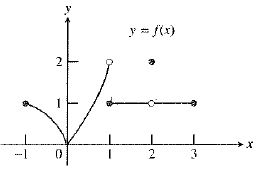
As observed from the graph, the function
Therefore, the statement
(b)
To check: Whether the statement
(b)
Answer to Problem 44E
The statement
Explanation of Solution
Given information:
The graph of the function is:
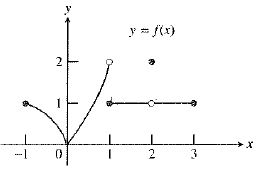
As observed from the graph, the function
So, the limit
Therefore, the statement
(c)
To check: Whether the statement
(c)
Answer to Problem 44E
The statement
Explanation of Solution
Given information:
The graph of the function is:
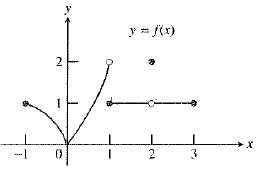
As calculated in part (b), the left hand limit and right hand limit is equal to
So, the value of
Therefore, the statement
(d)
To check: Whether the statement
(d)
Answer to Problem 44E
Yes, the statement
Explanation of Solution
Given information:
The graph of the function is:

As observed from the graph, the function
Therefore, the statement
(e)
To check: Whether the statement
(e)
Answer to Problem 44E
Yes, the statement
Explanation of Solution
Given information:
The graph of the function is:
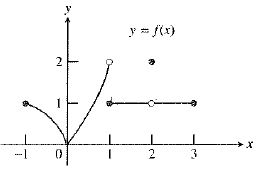
As observed from the graph, the function
Therefore, the statement
(f)
To check: Whether the statement
(f)
Answer to Problem 44E
Yes, the statement
Explanation of Solution
Given information:
The graph of the function is:
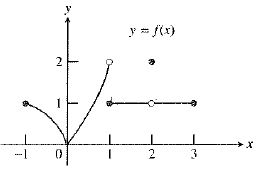
As calculated in part (d), the value
As calculated in part (e), the value
Both the left hand and right hand limits are not equal at
Therefore, the statement
(g)
To check: Whether the statement
(g)
Answer to Problem 44E
Yes, the statement
Explanation of Solution
Given information:
The graph of the function is:
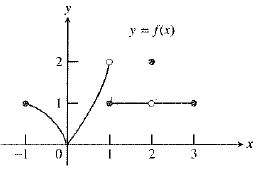
As observed from the graph, the function
So, the value of both
Therefore, the statement
(h)
To check: Whether the statement
(h)
Answer to Problem 44E
Yes, the statement
Explanation of Solution
Given information:
The graph of the function is:
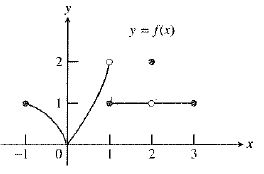
As observed from the graph, the function
So, the value
Therefore, the statement
(i)
To check: Whether the statement
(i)
Answer to Problem 44E
Yes, the statement
Explanation of Solution
Given information:
The graph of the function is:
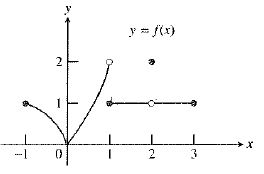
As observed from the graph, the function
So, the value
Therefore, the statement
Chapter 2 Solutions
Calculus 2012 Student Edition (by Finney/Demana/Waits/Kennedy)
Additional Math Textbook Solutions
Calculus: Early Transcendentals (3rd Edition)
Precalculus: Concepts Through Functions, A Unit Circle Approach to Trigonometry (4th Edition)
Calculus, Single Variable: Early Transcendentals (3rd Edition)
University Calculus: Early Transcendentals (4th Edition)
 Calculus: Early TranscendentalsCalculusISBN:9781285741550Author:James StewartPublisher:Cengage Learning
Calculus: Early TranscendentalsCalculusISBN:9781285741550Author:James StewartPublisher:Cengage Learning Thomas' Calculus (14th Edition)CalculusISBN:9780134438986Author:Joel R. Hass, Christopher E. Heil, Maurice D. WeirPublisher:PEARSON
Thomas' Calculus (14th Edition)CalculusISBN:9780134438986Author:Joel R. Hass, Christopher E. Heil, Maurice D. WeirPublisher:PEARSON Calculus: Early Transcendentals (3rd Edition)CalculusISBN:9780134763644Author:William L. Briggs, Lyle Cochran, Bernard Gillett, Eric SchulzPublisher:PEARSON
Calculus: Early Transcendentals (3rd Edition)CalculusISBN:9780134763644Author:William L. Briggs, Lyle Cochran, Bernard Gillett, Eric SchulzPublisher:PEARSON Calculus: Early TranscendentalsCalculusISBN:9781319050740Author:Jon Rogawski, Colin Adams, Robert FranzosaPublisher:W. H. Freeman
Calculus: Early TranscendentalsCalculusISBN:9781319050740Author:Jon Rogawski, Colin Adams, Robert FranzosaPublisher:W. H. Freeman
 Calculus: Early Transcendental FunctionsCalculusISBN:9781337552516Author:Ron Larson, Bruce H. EdwardsPublisher:Cengage Learning
Calculus: Early Transcendental FunctionsCalculusISBN:9781337552516Author:Ron Larson, Bruce H. EdwardsPublisher:Cengage Learning





